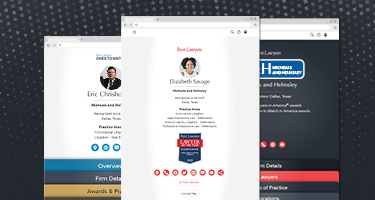Over the last year there has been a transformation of the National Heavy Vehicle Regulator (NHVR), the likes of which we have never seen before.
NVHR’s Regulatory Scope
The NHVR is Australia’s regulator for vehicles that have a gross vehicle mass (GVM) or aggregate trailer mass (ATM) of more than 4.5 tonnes.
Many vehicles have a GVM of 4.5 tonnes. By way of example, some of the larger Utes having a GVM just under 4.5 tonnes, and many vehicles towing a caravan will have an ATM more than 4.5 tonnes. The safe conclusion to make is that any truck, big or small, is regulated by the NHVR.
Heavy Vehicle National Law (HVNL)
The NHVR administers the Heavy Vehicle National Law (HVNL), which applies in all Australia’s states and territories except the Northern Territory and Western Australia.
Importantly, the HVNL provides that each party in the chain of responsibility for a heavy vehicle must ensure, so far as is reasonably practicable, the safety of the party’s transport activities relating to the vehicle.
The parties in the chain of responsibility are:
(a) if the vehicle’s driver is an employed driver—an employer of the driver
(b) if the vehicle’s driver is a self-employed driver—a contractor for the driver
(c) operator of the vehicle
(d) scheduler for the vehicle
(e) consignor of any goods in the vehicle
(f) consignee of any goods in the vehicle
(g) packer of any goods in the vehicle
(h) loading manager for any goods in the vehicle
(i) loader of any goods in the vehicle
(j) unloader of any goods in the vehicle
Relevant cases
Case 1: An expansion of regulator activity
The NHVR’s transformation arises out of two prosecutions. The first was a prosecution of the operator of a tilt tray tow truck and the second was a series of prosecutions of Connect Logistics and five of its employees.
In the first case of National Heavy Vehicle Regulator v Birrell [2023] SASC 49, the operator of a tilt tray tow truck was called to assist a driver whose vehicle had broken down on the side of the road. The operator followed safe procedures, but whilst he was engaged in dragging the vehicle up onto the back of his tow truck, the diver of the broken-down vehicle walked behind his vehicle and the vehicle being winched onto the truck bed. The chain towing the vehicle up the tilt-ramp snapped and the vehicle being towed rolled down the ramp killing the driver. The NHVR (through the South Australian police) prosecuted the operator of the tilt tray tow truck in a South Australian Magistrates Court alleging a failure to ensure, so far as is reasonably practicable, the safety of the party’s transport activities relating to the vehicle. The NHVR went further alleging that the operator’s conduct was reckless.
The Magistrate ruled in favour of the operator, finding that he was not reckless and the NHVR appealed. On appeal, the South Australian Supreme Court found the operator to have been reckless because he knew of the possibility of the rescued vehicle rolling down the ramp and failed to ensure the deceased operator’s safety so far as was reasonably practicable.
The significance of this case is threefold. It highlights that small trucks engaged in activities that have not traditionally been regulated by the NHVR are in fact governed by the NHVL. It also highlights that the NHVR will prosecute cases that do not fall within the more traditional long-distance transportation sector. Most importantly, the case determined that a failure to ensure the safety of others in circumstances where a person is aware of the possibility of the risk, as opposed to the probability, will be sufficient to expose them to a jail sentence.
Case 2 Corporate Headquarters interstate? No escape.
The second case (perhaps more accurately called a series of cases) arose out of a terrible situation where the driver of a 19 tonne semi-trailer fell asleep at the wheel on the Melbourne’s Eastern Freeway. The truck drove into 4 police officers who had stopped a vehicle on the Freeway, killing them all.
The Victorian police brought a prosecution against the driver. He pleaded guilty and was sentenced to 14.5 years jail. The NHVR (in part through the Victorian police), brought prosecutions against the driver’s corporate employer, the managing director, the national operations manager, the Queensland operations manager and the scheduler.
The company was fined $2.31 million and banned from operating for a year. All but one of the individuals charged were fined. The national operations manager contested his charge and was ultimately sentenced to 3 years imprisonment. In finding the national operations manager guilty, Magistrate Reiss observed:
“Clearly, it is reasonably practicable for a person in senior management to implement and enforce one’s own company’s policies and procedures. It is also reasonably practicable to modify the policies and procedures in light of new information and data about the work being conducted. It is difficult to see how knowingly not implementing or enforcing, or going contrary to, a company’s own documented policies and procedures, as is the case here, can amount to a reasonable excuse. The acts and omissions of the accused are without reasonable excuse.”
By any standards, a $2.31 million fine is an extraordinarily large fine and was undeniably the largest fine ever imposed under the NHVL. However, the jail sentence was what sent shock waves through the industry. With such large penalties being imposed, Magistrate Reiss’ words are worthy of more than a little self-reflection on the adequacy and effectiveness of internal policies and procedures.
Impact on agricultural industry
What does this mean for the agricultural industry? If you have a truck, then you should be asking whether the HVNL applies to you. If it does, then you have to consider what you need to do to demonstrate that you have done all that is reasonably practicable to ensure the safety of the driver and other people who may be around and interact with the truck and its load. The mere presence of a risk is enough to create the potential for a “reckless” charge, so serious consideration should be given to addressing all risks.
Because of the wide range of people within the “chain of responsibility”, it would also be wise to involve all farm workers in the risk assessment process. A fine in the millions will break many a business and imprisonment for any period of time is of course life changing. Investment in professional assistance is also a good idea, to assist in addressing the various other obligations under the HVNL.
Contact Macpherson Kelley
If you would like advice on whether the HVNL applies to you, our Agribusiness experts at Macpherson are well placed to assist. Contact our team to find out more.
















